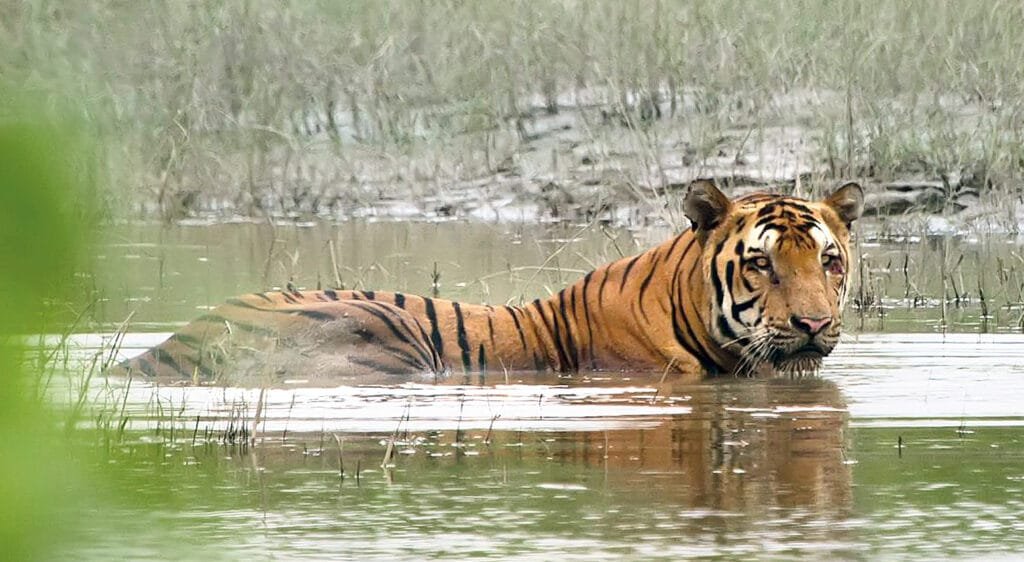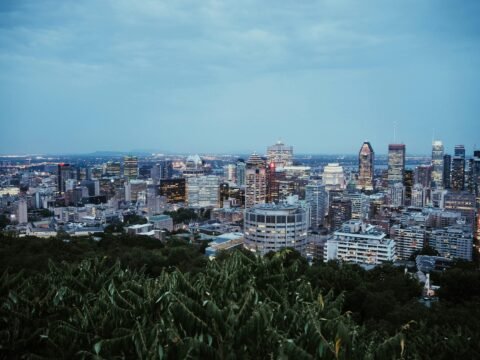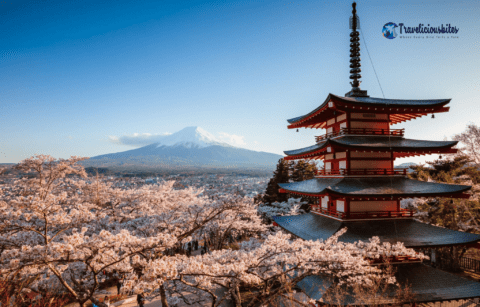Ever wanted to walk through nature’s wild heart?
Welcome to Assam — a land where misty forests, roaring rivers, and vibrant wildlife come alive in perfect harmony. Beyond its tea gardens and timeless culture lies a world teeming with rare species and untamed beauty.
From the one-horned rhinos of Kaziranga to the golden langurs of Manas, every corner tells a story of nature’s wonder. The national parks in Assam are not just protected lands — they are living, breathing ecosystems where adventure meets serenity.
So, pack your curiosity and step into Assam’s wilderness. Here, every sound, scent, and sight reminds you what it means to truly connect with nature.
1. Kaziranga National Park and Tiger Reserve

Welcome to Kaziranga National Park, the wild heart of Assam and a true paradise for nature lovers. Located mainly in the Golaghat district, this UNESCO World Heritage Site stretches into Nagaon and is home to the legendary one-horned rhinoceros. It’s also one of the world’s best places to spot the Royal Bengal Tiger, thanks to its high tiger density.
Covering over 430 square kilometres, Kaziranga is a living, breathing ecosystem. The vast floodplain of the Brahmaputra River creates stunning grasslands, wetlands, and forests that support life in every form. It’s one of the few wild spaces in eastern India that still feels untouched by human hands.
Of course, Kaziranga isn’t just about rhinos and tigers. You’ll find elephants, wild buffaloes, leopards, jungle cats, and even playful otters in its waters. But the park’s real surprise is its birdlife. With more than 500 bird species, Kaziranga is a dream come true for birdwatchers.
You can spot the Great Hornbill, Swamp Francolin, and the endangered Bengal Florican. During winter, migratory guests like bar-headed geese, pelicans, storks, and ruddy shelducks fill the skies. If you’re lucky, you might even catch a glimpse of the rare Baer’s Pochard or the majestic Eastern Imperial Eagle.
Each habitat — from tall elephant grass to serene wetlands — feels like a different world. The park transforms into a wildlife symphony where every sound tells a story.
Kaziranga was established in 1908 to protect Assam’s iconic rhinos, and more than a century later, it remains one of India’s proudest conservation successes.
If you’re planning a visit, remember — Kaziranga is open from November to April. It closes from May to October due to heavy monsoon rains.
2. Manas National Park

Tucked away in the Himalayan foothills, Manas National Park is one of the most breathtaking national parks in Assam. Spread across Baksa and Chirang districts, this UNESCO World Heritage Site is a paradise for wildlife lovers.
The park is home to over 109 animal species and 500 bird species — including 26 that are globally threatened. You can spot the Royal Bengal Tiger, Golden Langur, Clouded Leopard, and Pygmy Hog, along with elephants, gaurs, and wild water buffaloes.
Birdwatchers adore Manas for sightings of the Bengal Florican, Great Hornbill, and Scarlet Minivet. It also shelters 79 species of fish and rare turtles.
Established in 1928 and declared a national park in 1990, Manas closes from May to October during the monsoon season.
Related Bookmark These 11 Assam Hidden Gems – From Haflong Hills to Majuli Island
3. Nameri National Park
Tucked away in the Sonitpur district, near the Arunachal Pradesh border, Nameri National Park is one of the most peaceful national parks in Assam. It forms the core of the Nameri Tiger Reserve and is loved by birdwatchers and adventure seekers alike.
Established in 1985 and declared a national park in 1998, Nameri is home to over 300 bird species and animals like tigers, elephants, gaurs, and leopards. Bird lovers can spot the Great Hornbill, Ibisbill, and the rare White-winged Duck.
The park’s forested trails and the beautiful Jia Bhoroli River are perfect for rafting, birding, or simply relaxing. Eco-camps nearby offer a close-to-nature experience.
Nameri remains open from November to April and closes during the monsoon months.
4. Dibru-Saikhowa National Park
Set in the Dibrugarh and Tinsukia districts, Dibru-Saikhowa National Park is one of the most unique national parks in Assam. Spread over 340 square kilometres, it sits between the Brahmaputra, Lohit, and Dibru rivers. This park is known for its lush wetlands, dense forests, and the largest Salix swamp forest in Northeast India.
Established as a biosphere reserve in 1997 and a national park in 1999, it’s a paradise for birdwatchers and nature lovers. Look out for the endangered White-Winged Wood Duck, Jerdon’s Babbler, and Black-Breasted Parrotbill. You might also spot tigers, capped langurs, and the famous bright feral horses roaming freely. Dibru-Saikhowa stays open from November to April, offering a wild yet peaceful escape by the river.
5. Orang National Park and Tiger Reserve

On the northern banks of the Brahmaputra lies Orang National Park, one of the oldest and most beautiful national parks in Assam. Often called the Mini Kaziranga, it shares a similar landscape of marshes, grasslands, and winding streams. Spread across 279 square kilometres, the park is home to the Great Indian One-Horned Rhinoceros, tigers, Asiatic elephants, and the rare Pygmy Hog.
Established as a wildlife sanctuary in 1985 and declared a national park in 1999, Orang became India’s 49th Tiger Reserve in 2016. Bird lovers can spot the Great Indian Hornbill and Black-Necked Stork, while the rivers host Gangetic dolphins and several turtle species.
Open from November to April, Orang offers a perfect blend of wildlife, water, and wonder.
6. Dehing Patkai National Park
Tucked away in the Dibrugarh and Tinsukia districts, Dehing Patkai National Park is one of the most enchanting national parks in Assam.
Known as the Amazon of the East, it is India’s largest lowland rainforest and the last patch of virgin jungle in the state.
The park gets its name from the Dehing River and the Patkai Hills that surround it. Spread over 231 square kilometres, it shelters Asian elephants, Hoolock gibbons, Slow lorises, and Assamese macaques.
Birdwatchers can spot hornbills, broadbills, and barbets, while the forest also hosts 301 species of butterflies and 47 reptiles.
Declared a wildlife sanctuary in 2004 and a national park in 2021, Dehing Patkai is best visited from November to April for its lush greenery and rich wildlife.
Must read: 10 Iconic Assam Tourist Attractions You Shouldn’t Miss on Your Trip
7. Raimona National Park

In the heart of the Bodoland Territorial Region, Raimona National Park stands as one of the newest and most exciting national parks in Assam. Spread across 422 square kilometres in Kokrajhar district, it was declared a national park in June 2021.
Raimona is famous for its massive herds of Asian elephants and its vital role in connecting wildlife corridors with Manas National Park, Bhutan, and Arunachal Pradesh. The park’s landscape of lush forests, rolling hills, and rivers creates a perfect home for Clouded leopards, Golden langurs, gaurs, and chitals.
Bird lovers can spot hornbills and woodpeckers, while butterfly enthusiasts will find over 150 species, including the rare Yellow-Crested Spangle.
The best time to visit is from November to April for the full rainforest experience.
8. Pobitora Wildlife Sanctuary
Just an hour from Guwahati, Pobitora Wildlife Sanctuary is a hidden gem among the famous national parks in Assam. Spread over 38 sq. km in the Morigaon district, it’s known for having one of the highest densities of one-horned rhinos in the world. You can also spot leopards, wild boars, and over 350 bird species, including Indian rollers, pelicans, and whistling teals. The wetlands shimmer at sunrise, perfect for photography and safaris. Open from November to April, Pobitora offers the thrill of the wild without venturing too far from the city.
9. Hollongapar Gibbon Wildlife Sanctuary
Hidden in the Jorhat district, Hollongapar Gibbon Wildlife Sanctuary is one of the most fascinating national parks in Assam. Spread across just 21 sq. km and surrounded by endless tea gardens, it was established in 1997 to protect India’s only ape — the Hoolock Gibbon.
The sanctuary is a paradise for primate lovers, where you can also spot stump-tailed and pig-tailed macaques, along with tigers and leopards. Birdwatchers will be thrilled with over 219 species, including the Indian Pied Hornbill and Wreathed Hornbill. The dense forest trails are calm, green, and alive with calls of wildlife.
Open from November to April, it’s the perfect spot to slow down, breathe the forest air, and experience Assam’s wilder side.
10. Bornadi Wildlife Sanctuary

Tucked away in the Udalguri and Baksa districts, Bornadi Wildlife Sanctuary is one of the quietest yet most beautiful national parks in Assam. Spread across 26 sq. km, it was established in 1980 and named after the Bornadi River. The sanctuary protects rare species like the pygmy hog, hispid hare, and barking deer. Bird lovers can spot hornbills, peafowls, woodpeckers, and the colourful Red-Billed Blue Magpie. Open from November to April, Bornadi is a peaceful escape for true nature enthusiasts.
Also read: 10 Famous Temples in Assam to Explore










